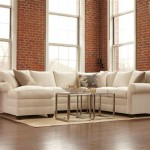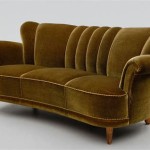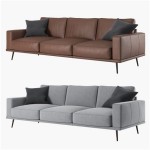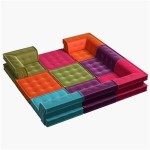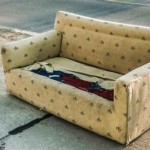Sofa Foam Cushion Replacement: A Comprehensive Guide
Sofa cushions, the unsung heroes of living room comfort, endure significant wear and tear over time. Daily use leads to the gradual compression and degradation of the foam within, resulting in a loss of support and overall discomfort. Rather than replacing an entire sofa, replacing the foam cushions offers a cost-effective and sustainable solution to revitalizing seating. This article provides a comprehensive guide to sofa foam cushion replacement, exploring various foam types, the replacement process, and factors to consider when selecting new foam.
Understanding Foam Types for Sofa Cushions
The market offers a variety of foam types, each possessing distinct characteristics that influence comfort, durability, and cost. Understanding these differences is crucial for making informed decisions about sofa cushion replacement.
Polyurethane Foam: This is the most common and affordable type of foam utilized in sofa cushions. It comes in varying densities, typically measured in pounds per cubic foot (PCF). Lower density polyurethane foam is softer and less durable, making it suitable for back cushions or areas with less frequent use. Higher density polyurethane foam offers greater support and resilience, extending its lifespan for seat cushions.
High-Resilience (HR) Foam: HR foam represents a step up from standard polyurethane. It is manufactured with a more complex process that results in improved comfort, support, and durability. HR foam exhibits a quicker recovery rate after compression, regaining its original shape more readily. This characteristic makes it an excellent choice for frequently used seat cushions, providing long-lasting support and preventing sagging.
Memory Foam: Viscoelastic foam, commonly known as memory foam, conforms to the body's contours, distributing weight evenly and reducing pressure points. It provides a unique sinking-in sensation, often appealing to individuals seeking enhanced comfort. While memory foam is excellent for pressure relief, it can retain heat and may not be suitable for those who prefer a firmer seating surface. For sofa cushions, memory foam is often used in conjunction with other foam types to provide a balance of support and comfort.
Latex Foam: Derived from either natural or synthetic sources, latex foam is known for its exceptional durability, breathability, and hypoallergenic properties. Natural latex foam is derived from the sap of rubber trees, making it an eco-friendly option. Latex foam offers a firm yet supportive feel, making it suitable for individuals who require superior support. Its open-cell structure allows for excellent air circulation, preventing heat buildup and promoting comfort.
Down and Feather: While not technically foam, down and feather cushions offer a luxurious and soft feel. However, they require frequent fluffing to maintain their shape and loft, and they do not provide the same level of support as foam cushions. Down and feather cushions are often used as back cushions or decorative pillows, rather than seat cushions.
The Sofa Foam Cushion Replacement Process
Replacing sofa foam cushions is a straightforward process that can be completed with basic tools and a bit of patience. The following steps outline the general procedure:
1. Assessment and Measurement: Begin by assessing the condition of the existing cushions. Note the dimensions of the cushions, including length, width, and thickness. These measurements are crucial for ordering accurately sized replacement foam. If the existing cushion covers are zippered, carefully remove the old foam. If the covers are sewn shut, use a seam ripper to carefully open them, preserving the fabric for reuse.
2. Foam Selection and Ordering: Based on the desired comfort level, budget, and durability requirements, select the appropriate type and density of foam. Provide the accurate cushion dimensions to the foam supplier when placing the order. Consider ordering slightly oversized foam to allow for a snug fit within the cushion covers. It is generally better to have slightly too much foam than too little, as excess foam can be trimmed.
3. Preparing the Cushion Covers: Inspect the cushion covers for any damage, such as tears or weakened seams. Repair any damage before inserting the new foam to prevent further deterioration. Clean the cushion covers according to the manufacturer's instructions to remove dirt and stains.
4. Inserting the New Foam: If the foam is slightly oversized, use a long, sharp knife or an electric carving knife to trim it down to the appropriate size. Wrap the foam in batting (dacron) to soften the edges and fill out the cushion cover more fully. This step also helps to prevent the foam from rubbing directly against the fabric, which can cause premature wear. Slowly and carefully insert the foam into the cushion cover, ensuring that it is evenly distributed and fills all corners.
5. Closing the Cushion Covers: If the cushion covers have zippers, simply zip them closed. If the covers were sewn shut, carefully sew them closed using a sewing machine or by hand. Use a durable thread that matches the color of the fabric.
Key Factors to Consider When Selecting Replacement Foam
Choosing the right replacement foam involves considering several factors to ensure optimal comfort, durability, and value. These factors include density, indentation load deflection (ILD), and budget.
Foam Density: Density, measured in pounds per cubic foot (PCF), indicates the weight of the foam. Higher density foam is generally more durable and provides better support than lower density foam. For seat cushions, a density of 2.0 PCF or higher is recommended for long-lasting support. Back cushions can typically utilize lower density foam, around 1.5 PCF.
Indentation Load Deflection (ILD): ILD, also known as firmness rating, measures the amount of force required to compress the foam by a specific percentage. A lower ILD indicates a softer foam, while a higher ILD indicates a firmer foam. The ideal ILD depends on personal preference and the intended use of the cushion. Individuals who prefer a softer seating experience may opt for a lower ILD, while those who require more support may prefer a higher ILD.
Budget: The cost of foam varies depending on the type, density, and thickness. Polyurethane foam is generally the most affordable option, while latex and memory foam tend to be more expensive. Consider the long-term value of the foam when making a decision. While lower-priced foam may seem appealing initially, it may require more frequent replacement, ultimately costing more in the long run.
Cushion Shape and Size: The shape and size of the sofa cushions will also influence the foam selection. For oddly shaped cushions or those with intricate designs, it may be necessary to have the foam custom cut. Accurately measuring the dimensions of the cushions is crucial for ensuring a proper fit.
Allergies and Sensitivities: Individuals with allergies or sensitivities to certain materials should consider hypoallergenic foam options, such as latex foam or memory foam with hypoallergenic covers. Ensure that the foam is free from harmful chemicals and VOCs (volatile organic compounds).
Environmental Considerations: For environmentally conscious consumers, natural latex foam is a sustainable option. It is derived from renewable resources and is biodegradable. Recycled foam options are also available, offering an environmentally friendly alternative to traditional foam.
By carefully considering these factors, individuals can select the appropriate sofa foam cushion replacements to enhance the comfort, durability, and longevity of their furniture.

Replacement Seats And Cushions Foam

Sit Better With Replacement Foam Sofa Cushions Foamite

When To Replace Your Sofa Cushions Foamite

Couch Cushion Foam Solutions

High Density Upholstery Foam Seat Sofa Cushion Replacement Sheets Padding Com

High Density Upholstery Foam Seat Sofa Cushion Replacement Sheets Padding Com

Foam Replacement Couch Cushions Custom Foamorder

Thinking About Sofa Cushion Foam Replacement Wefixanysofa Com

Upholstery Foam Cushion 5 X 30 80 36 Ild Semi Firm Couch Replacement Padding White By Ritchie Mattress Com

Airtex 5 X 22 High Density Foam Cushion Replacement Joann

